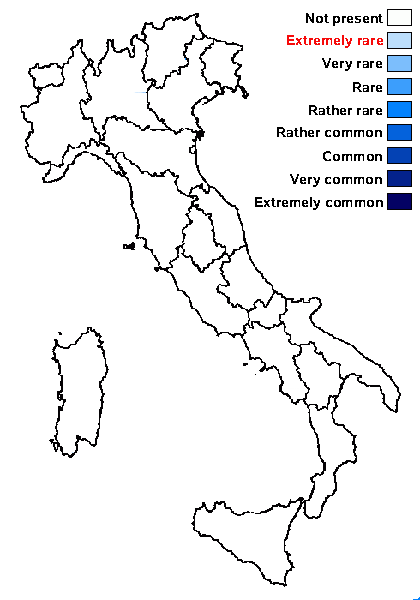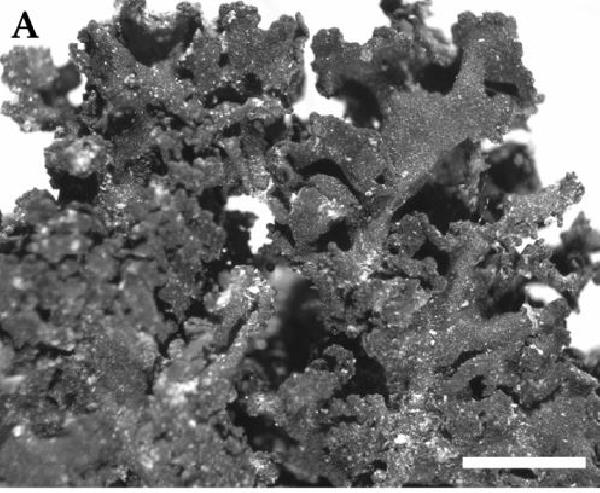Leptochidium crenatulum (Nyl.) P.M. Jørg.
Graphis Scripta, 18, 1: 19, 2006. Basionym: Collema rivulare var. crenatulum Nyl. - Flora, 58, 7: 106, 1875
Synonyms:
Distribution:
Description: Thallus squamulose, subgelatinous when wet, heteromerous, incompletely corticate, with a medulla of loose hyphae, consisting of up to 1 mm wide, 80-120 µm thick, rounded to elongate, olive-brown squamules which often form up to 2 cm wide, flat cushions, the margins of squamules thickened, notched, often bearing secondary isidioid lobules, without hairs. Upper surface uneven, without isidia. Apothecia and pycnidia unknown. Photobiont cyanobacterial (Nostoc, the cells 4-6 µm wide, arranged in short chains). Spot tests: all negative. Chemistry: without lichen substances. Note: an arctic-alpine species most frequent in Scandinavia, extremely rare also in the Alps (Switzerland). It grows on mossy, wet siliceous rocks, often near waterfalls. To be looked for in the Italian Alps.
Growth form: Squamulose
Substrata: rocks
Photobiont: cyanobacteria, filamentous (e.g. Nostoc, Scytonema)
Reproductive strategy: mainly asexual, by thallus fragmentation
Most common in areas with a humid-warm climate (e.g. most of Tyrrenian Italy)

Predictive model
Growth form: Squamulose
Substrata: rocks
Photobiont: cyanobacteria, filamentous (e.g. Nostoc, Scytonema)
Reproductive strategy: mainly asexual, by thallus fragmentation
Most common in areas with a humid-warm climate (e.g. most of Tyrrenian Italy)

Predictive model


